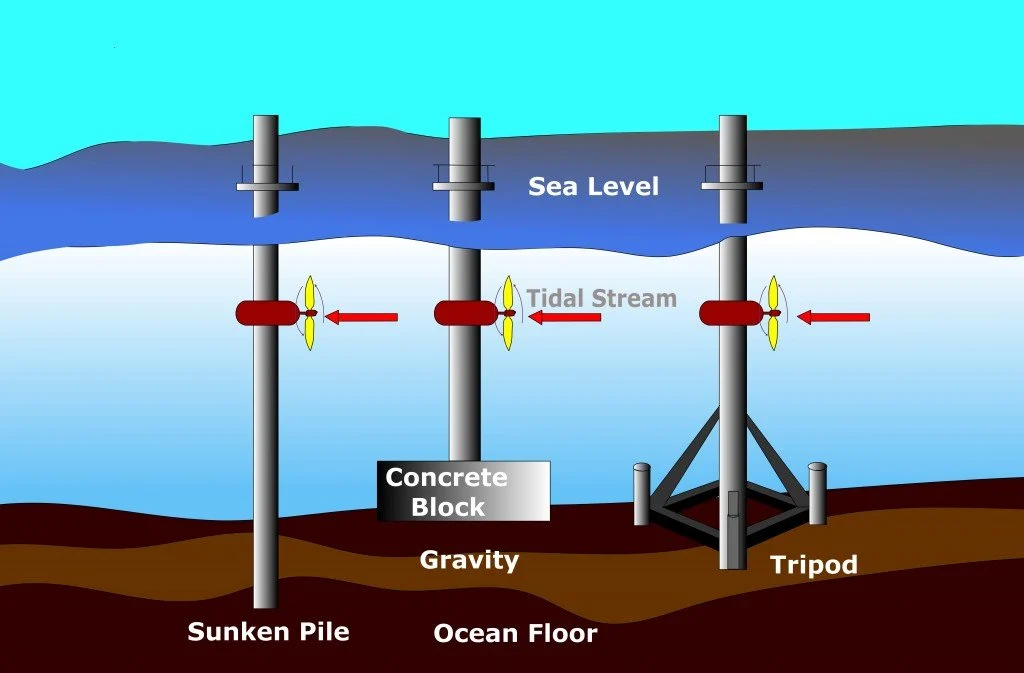
Harnessing the Tides: The Promise of Tidal Energy
As the world’s population grows, so does the demand for energy. As we deplete our finite resources, we are forced to look towards renewable energy sources to meet our needs. One such source is tidal energy, which is produced by harnessing the power of the tides. Tidal energy has the potential to provide a significant portion of the world’s electricity, but is it a viable alternative to traditional sources of energy? In this article, we will explore the promise of tidal energy and its potential to transform the way we power our homes and businesses.
What is tidal energy?
Tidal energy is a form of renewable energy that is generated by harnessing the power of the tides. It works by converting the kinetic energy of the moving tides into electricity. The energy is typically harvested using tidal turbines, which are similar to wind turbines but are submerged underwater.
How does tidal energy work?
Tidal energy works by harnessing the power of the tides. The tides are created by the gravitational pull of the moon and the sun on the Earth’s oceans. As the tides move in and out, they create a flow of water that can be used to generate electricity.
Tidal turbines are typically installed in areas with high tidal ranges, such as estuaries and bays. These turbines are submerged underwater and are designed to rotate as the tides flow in and out. The rotation of the turbines generates electricity, which is then transmitted to the grid.
The Benefits of Tidal Energy
Tidal energy has a number of advantages over traditional sources of energy. First and foremost, it is a renewable source of energy that does not produce greenhouse gas emissions. This makes it an environmentally friendly alternative to fossil fuels.
In addition to being renewable, tidal energy is also predictable. The tides are driven by the gravitational pull of the moon and the sun, which means they are highly predictable. This predictability makes it easier to integrate tidal energy into the grid and to manage the supply and demand of electricity.
Finally, tidal energy has the potential to provide a significant amount of electricity. According to the International Energy Agency, tidal energy has the potential to provide up to 11% of the world’s electricity needs.
The Challenges of Tidal Energy
While tidal energy has a lot of potential, there are also a number of challenges that need to be overcome. One of the biggest challenges is the high cost of installation. Tidal turbines are expensive to install and maintain, which can make them less economically viable than other forms of renewable energy.
Another challenge is the impact of tidal turbines on marine life. Tidal turbines can pose a risk to marine mammals and fish, and there is still much research that needs to be done to understand the long-term impacts of tidal energy on marine ecosystems.
The Future of Tidal Energy
Despite the challenges, tidal energy has a bright future. Many countries are investing in tidal energy research and development, and new technologies are being developed that will make tidal energy more economically viable.
One such technology is dynamic tidal power (DTP), which is a new form of tidal energy that is still in the early stages of development. DTP works by harnessing the power of the tides in shallow seas and using it to generate electricity. This technology has the potential to provide a significant amount of electricity, and it is more economically viable than traditional tidal energy.
Conclusion
Tidal energy is a promising source of renewable energy that has the potential to provide a significant amount of the world’s electricity. While there are challenges that need to be overcome, new technologies are being developed that will make tidal energy more economically viable and environmentally friendly. As we continue to deplete our finite resources, it is important to explore and invest in renewable energy sources like tidal energy to ensure a sustainable future for generations to come.
FAQs
-
How much electricity can tidal energy provide? Tidal energy has the potential to provide up to 11% of the world’s electricity needs.
-
What are some of the benefits of tidal energy? Tidal energy is a renewable source of energy that is predictable and does not produce greenhouse gas emissions.
-
What are some of the challenges of tidal energy? Tidal energy is expensive to install and maintain, and there is still much research that needs to be done to understand its long-term impact on marine ecosystems.
-
What is dynamic tidal power? Dynamic tidal power is a new form of tidal energy that is still in the early stages of development. It works by harnessing the power of the tides in shallow seas and using it to generate electricity.
-
Is tidal energy a viable alternative to traditional sources of energy? While there are challenges that need to be overcome, new technologies are being developed that will make tidal energy more economically viable and environmentally friendly, making it a promising alternative to traditional sources of energy.
